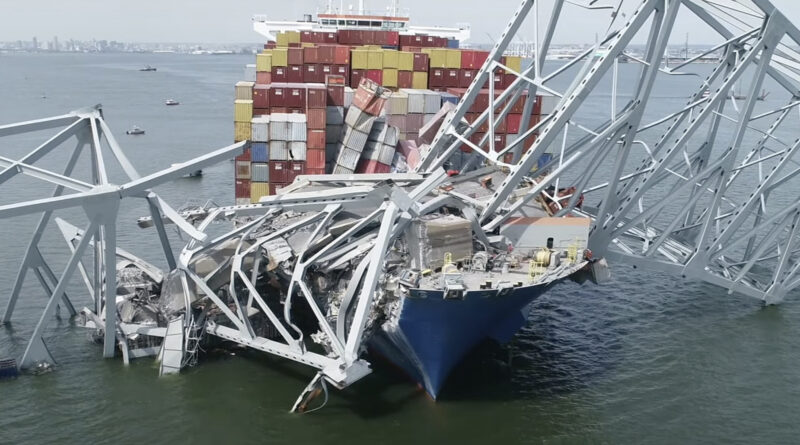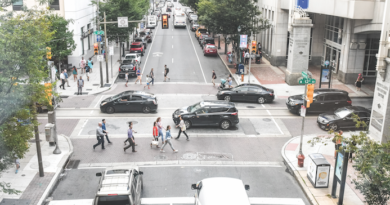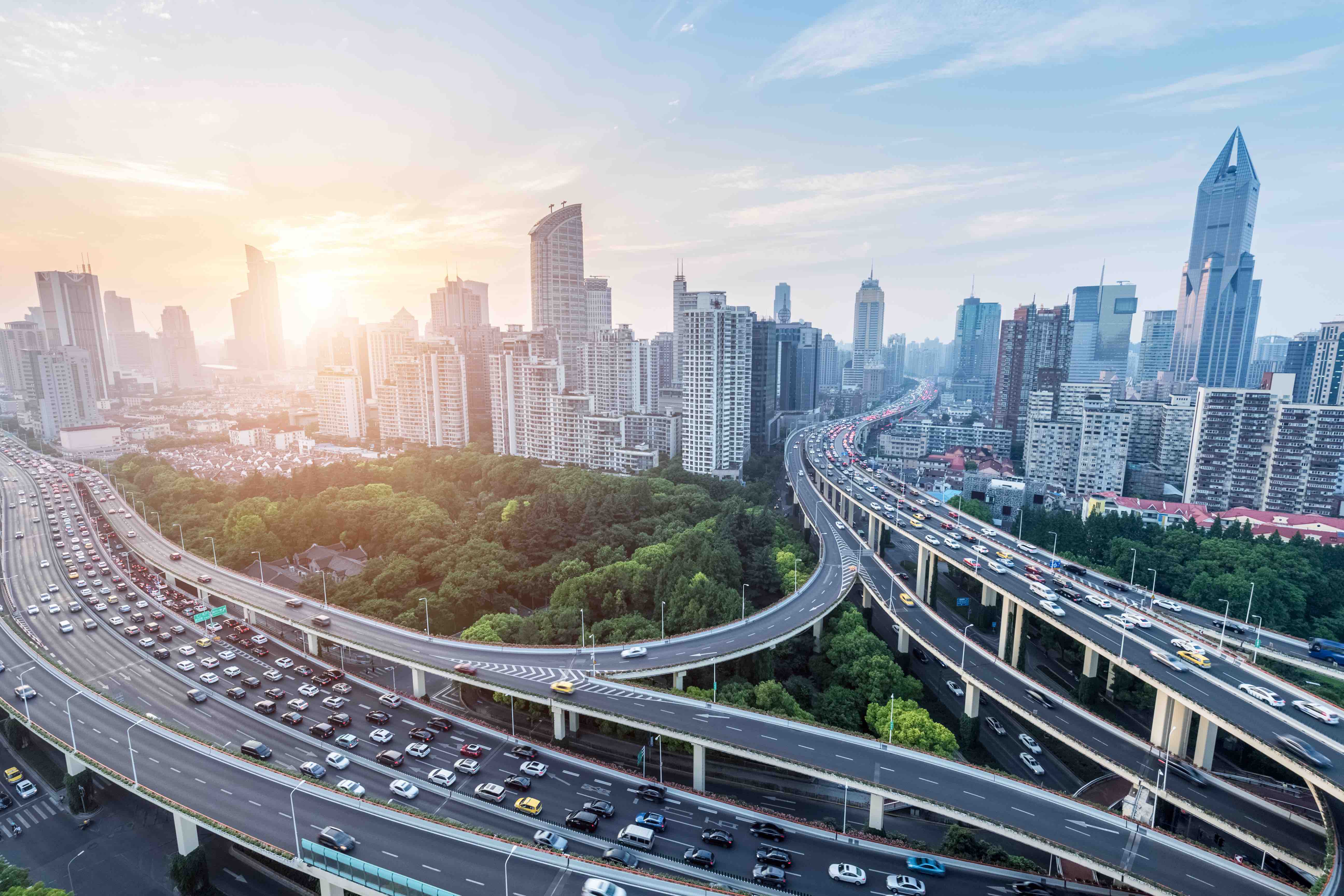Baltimore Bridge Collapse Raises Questions
On Mar. 26, 2024, at approximately 1:30 a.m., one of the Francis Scott Key Bridge’s pillars was struck by a Singaporean-flagged container ship, Dali, leaving the Port of Baltimore. This collision resulted in the collapse of the structure with six construction workers yet to be located and presumed dead, at the time of writing.
The length of the Francis Scott Key Bridge totaled 8,636 feet and was a steel arch-shaped continuous-through-truss bridge structure combining the behaviors of an arch, truss and cantilever. Upon construction, it was the second longest continuous-truss bridge span in the world with a main span of 1,200 feet.
The colliding ship is approximately 984 feet long, weighing 95,000 gross tons at the time of the crash and was chartered to carry cargo by Danish shipping giant Maersk.
The ship had lost power. “Just minutes before (hitting) the bridge, there was a total blackout on the ship, meaning that the ship lost engine power and electrical power. It was a complete blackout,” American Pilots Association Executive Director and General Counsel Clay Diamond said. In response, the pilot did “everything that he could have done” to slow the ship and keep it from drifting to the bridge pillar, Diamond continued.
It was confirmed by the Maritime and Port Authority of Singapore that Dali had lost engine power.
In the end, the ship drifted to the right, crashing into a pillar, as opposed to crossing under the center of the bridge where the clearance was the highest.
The Bigger Picture
The Port of Baltimore is the largest port in the United States for autos and light trucks, handling 850,000 vehicles in 2023, marking a record year. Additionally, the port indirectly employs over 140,000 people and handles more foreign cargo than any other port in the country.
With the port closure and collapse of the structure, there will be major repercussions on the city’s economy as well as the country’s supply chain, as stated by U.S. Transportation Secretary Pete Buttigieg Wednesday.
Buttigieg said there are four main focus points ahead:
- Reopening the port
- Dealing with supply issues until its reopening
- Rebuilding the bridge
- Dealing with road transportation issues until the bridge is rebuilt
There is something to be said about the incident as a whole: could this have been prevented?
The question lies in the bridge’s construction. As the ship struck a critical support structure known as a pylon or pier, is there something that could’ve been installed to these beams previously to deflect collisions? Did the bridge have adequate blocking mechanisms in place to protect against such?
To engineers, these protection devices are known as fenders.
Fenders can present as something such as pyramids of rocks around the pylons to major concrete rings padded with slats of wood, both of which are designed to protect the bridge’s support from collisions.
It remains unclear if any such thing was built around Francis Scott Key Bridge’s piers to deflect a strike from the 95,000-gross-ton vessel.
Buttigieg commented on if any bridge could withstand something of that power. “This is a unique circumstance. I do not know of a bridge that has been constructed to withstand a direct impact from a vessel of this size,” Buttigieg told reporters.
Evolution of Containerships – Then Vs. Now:
- 1970: 1,000-2,500 TEU
- 2019: 21,000-25,000 TEU
According to a 2018 report from the World Association for Waterborne Transport Infrastructure, there were 35 major bridge collapses worldwide because of ship or barge collisions between 1960 and 2015, meaning the question of how to support a structure from deflecting a collision should have been asked.
For the bridge in question today, no significant fender structures were visible to engineers who reviewed the photos of the bridge both before and after the crash.
“If you zoom further out, you can see these large cylinders that sort of define the shipping channel,” said Benjamin W. Schafer, a professor of engineering at Johns Hopkins University. “They are to direct the ships and they are part of the bridge structure. Some would say those are protective structures. But I haven’t seen any evidence of fenders myself.”
There were arguments about whether or not fenders, even of significant strength, would be strong enough to deflect a cargo ship of such power.
Professor Schafer continued with an alternate method. “Could we design something that’s big enough to divert a runaway cargo ship? Yes. Would it be of a scale that’s practical? Probably not.”
But rather than to build larger fenders, the key lies in diverting vessels before they get too close, according to Schafer.
“The better answer is to have the people and the processes in place, so it never happens,” Schafer concluded.
Concluding Thoughts
Fenders may be the answer, or maybe Schafer’s diversion method rules are true. Either way, this incident, along with the 35 other reported bridge collapses, says something about our nation’s port infrastructure as a whole.
What remains frightening is this incident’s effect on both the local and national U.S. economy and how that might play out, as well as those 140,000 employees who are most likely out of work for the time being and the cargo vessels and inventories trapped in a fouled harbor.
Additionally posed is what this incident exposes: a flaw in our port infrastructure that can result in a crippled economy by simply having a cargo ship collide with a key supporting bridge element. What can we do about the potential threat of terrorist entities realizing this weakness?
Photo Credit: In this image taken from video released by the National Transportation and Safety Board, the cargo ship Dali is stuck under part of the structure of the Francis Scott Key Bridge after the ship hit the bridge, Tuesday, March 26, 2024, in Baltimore. (NTSB via AP)




